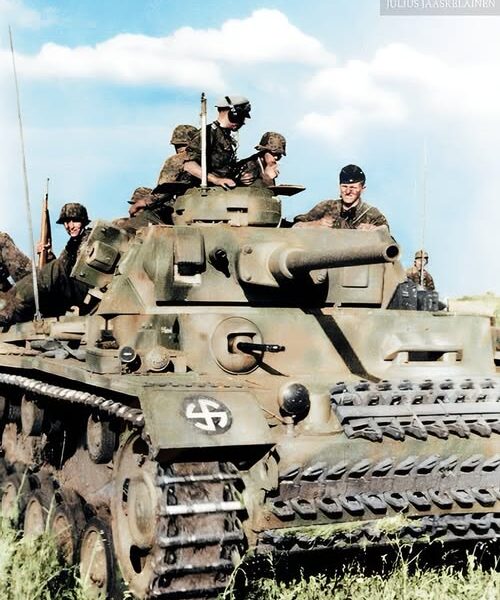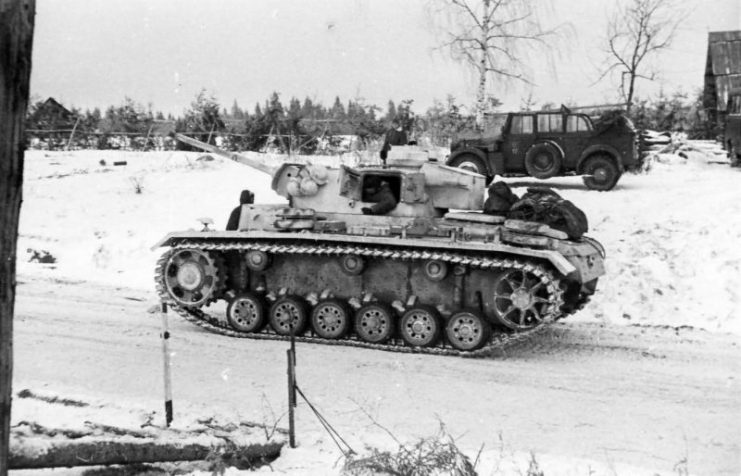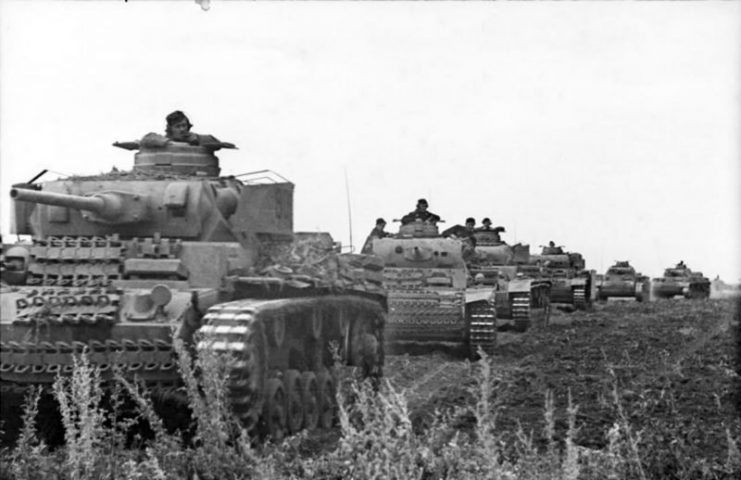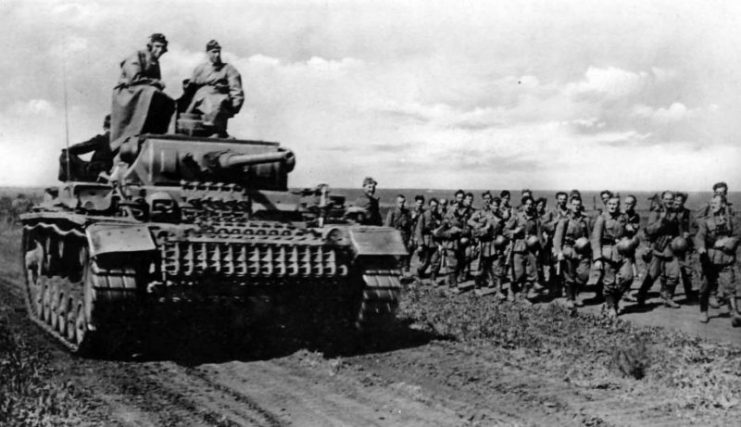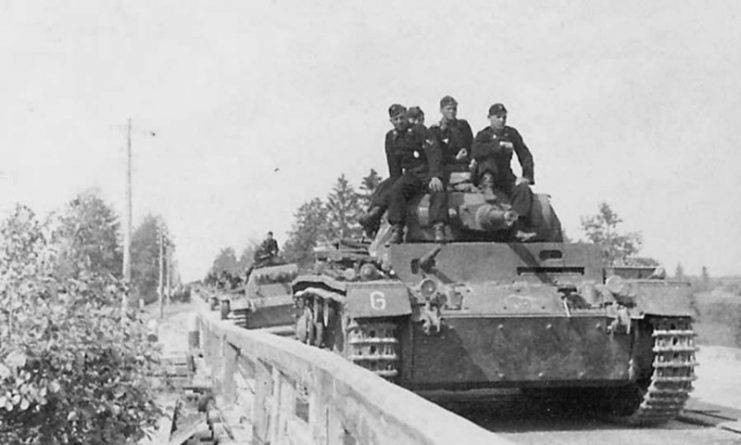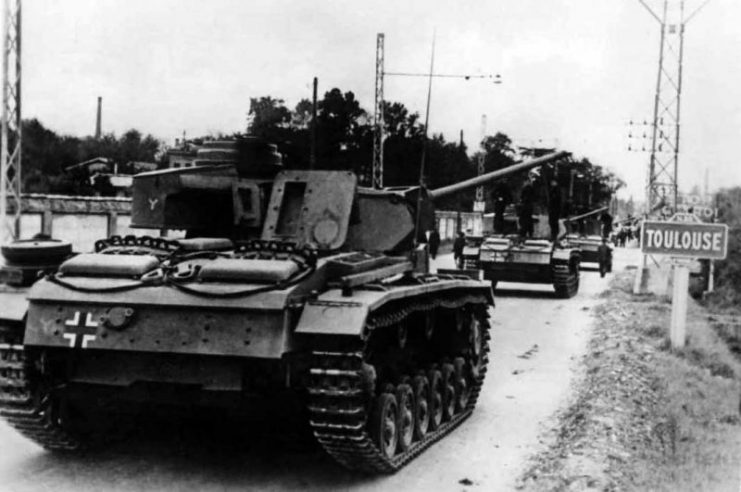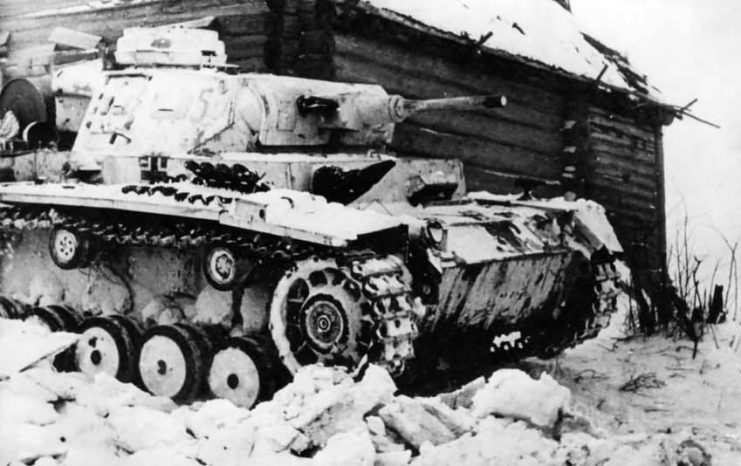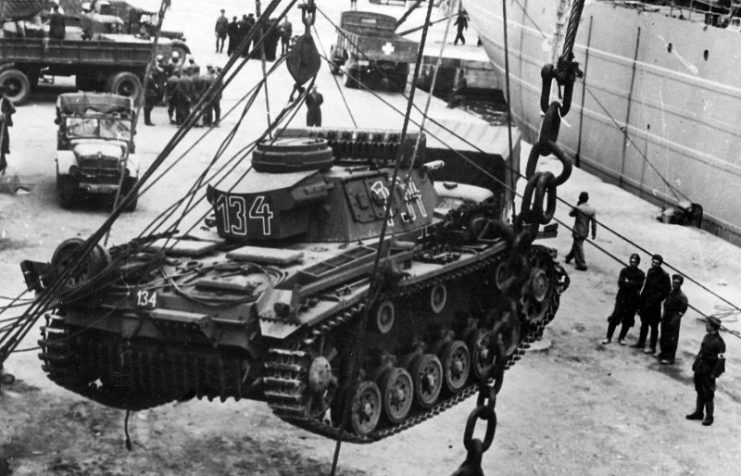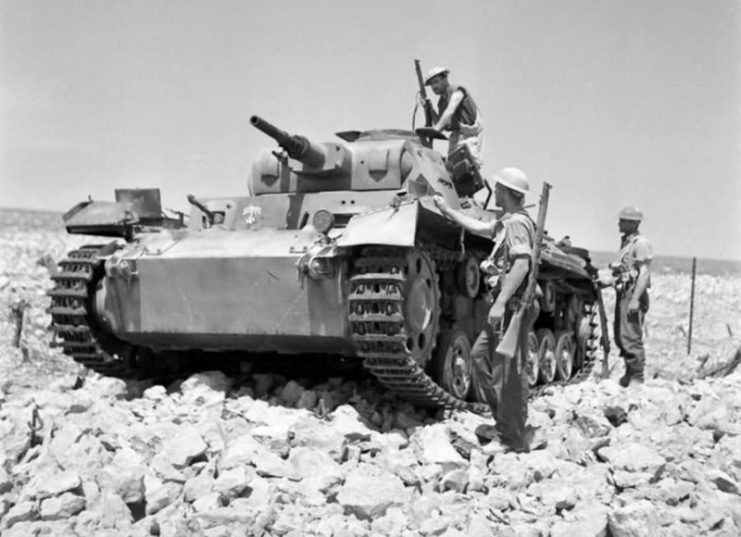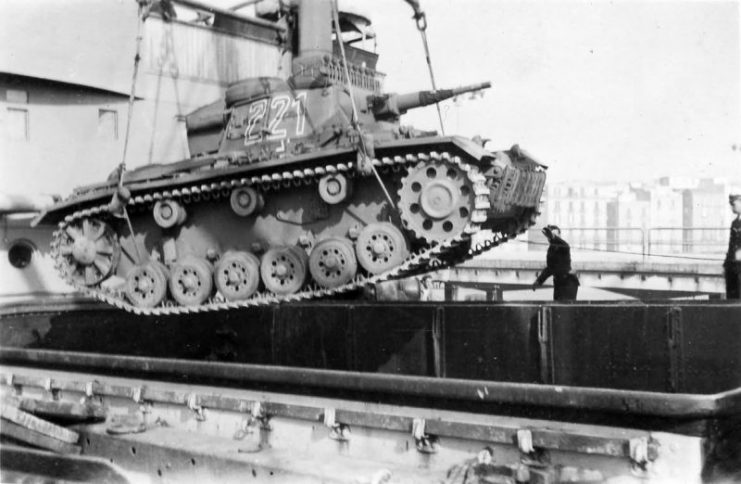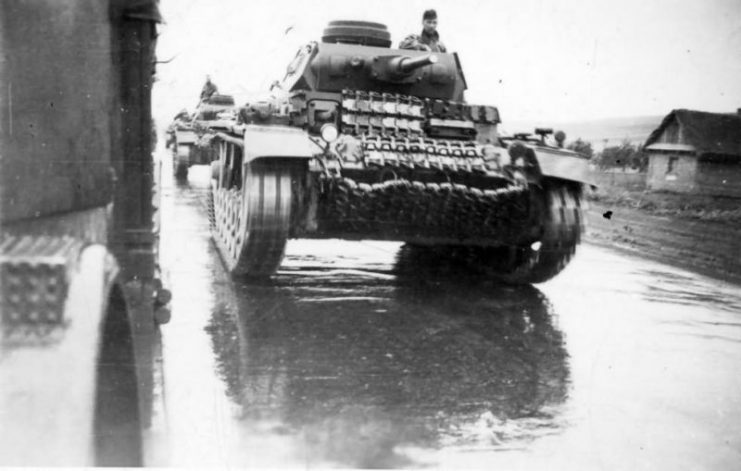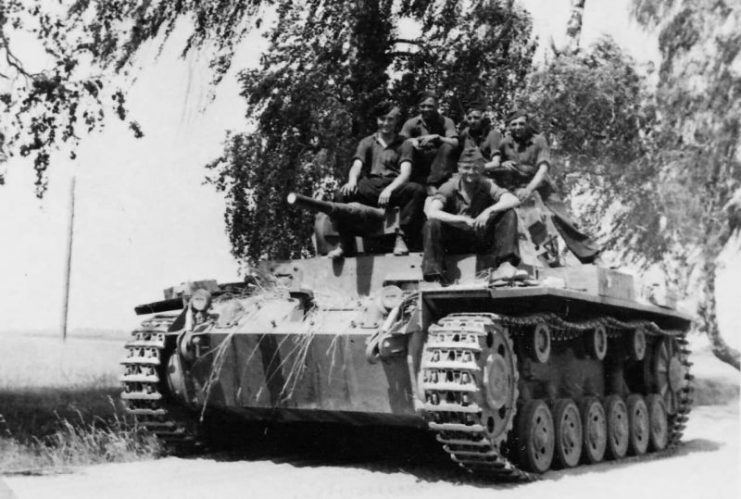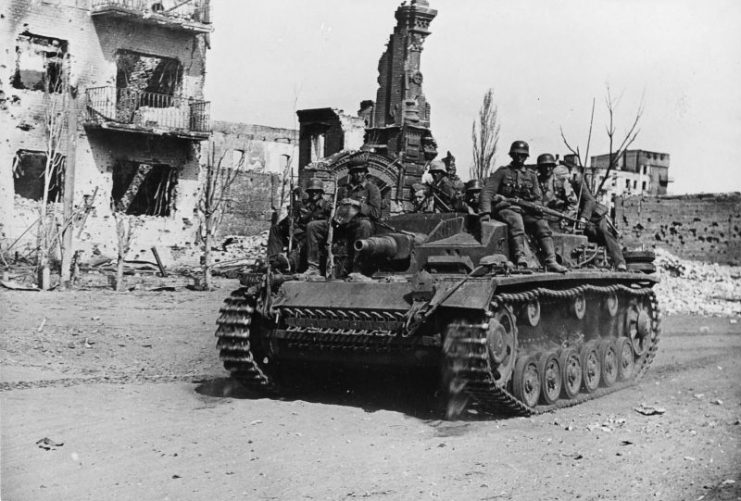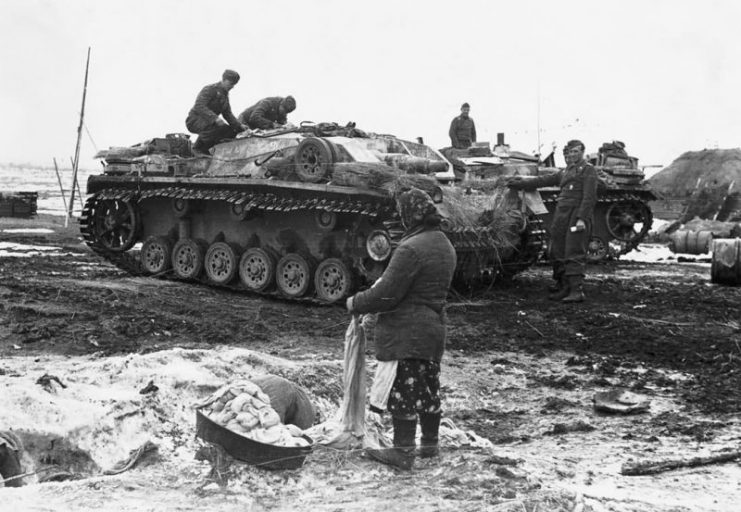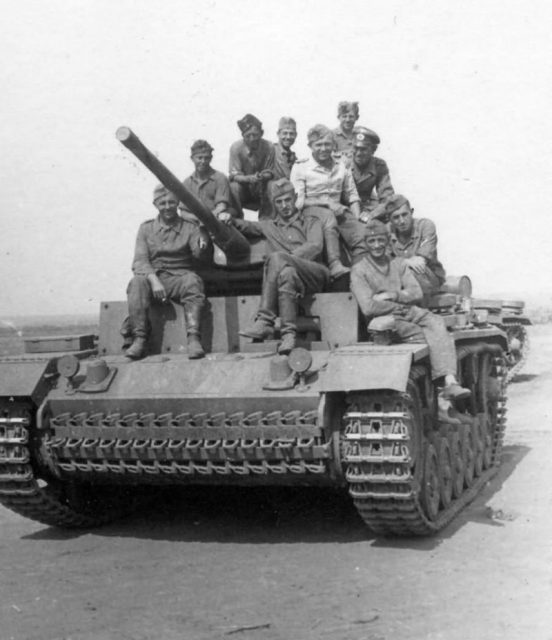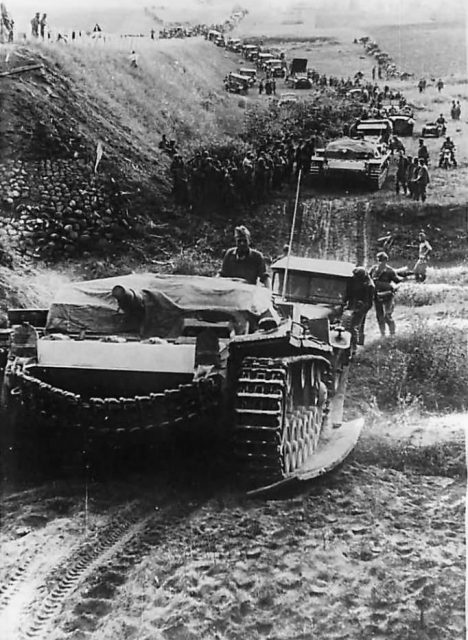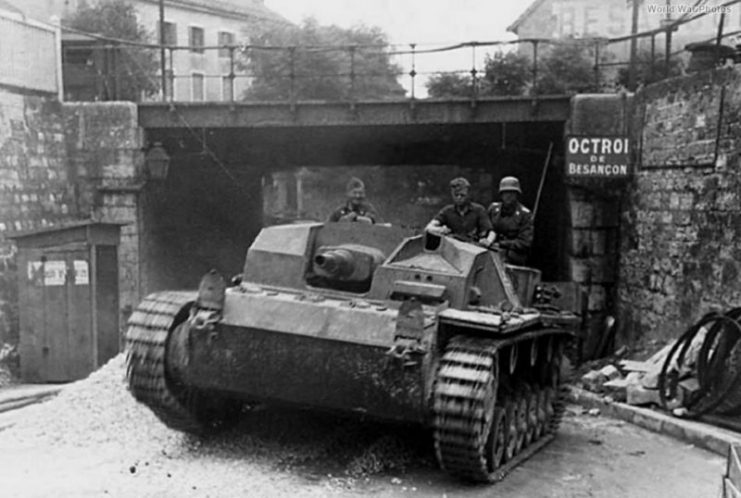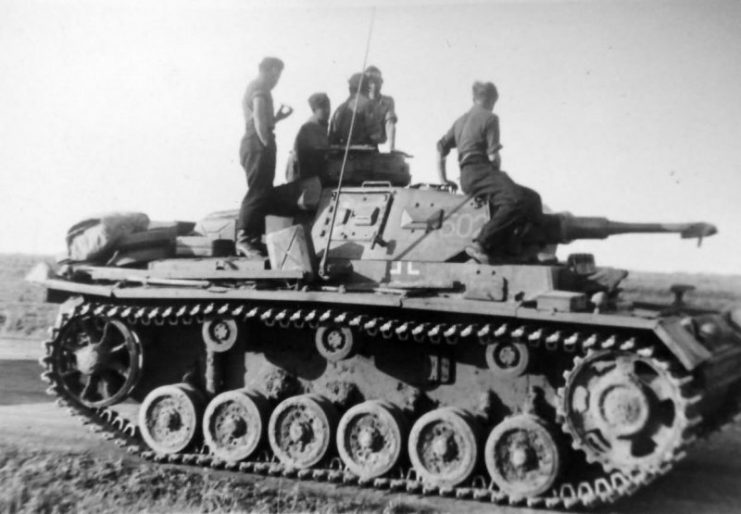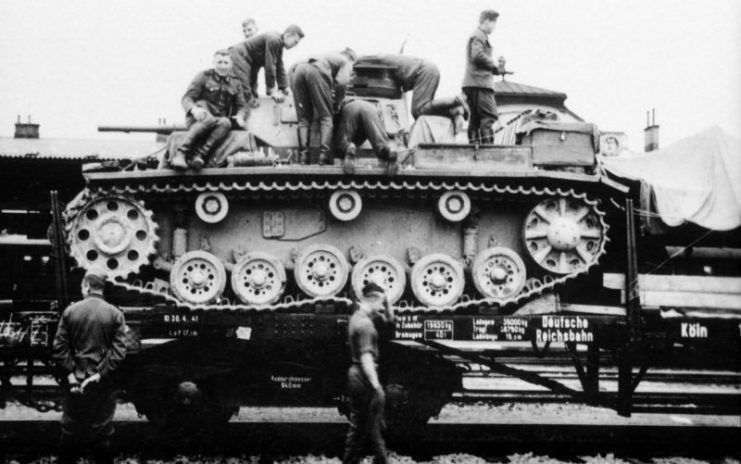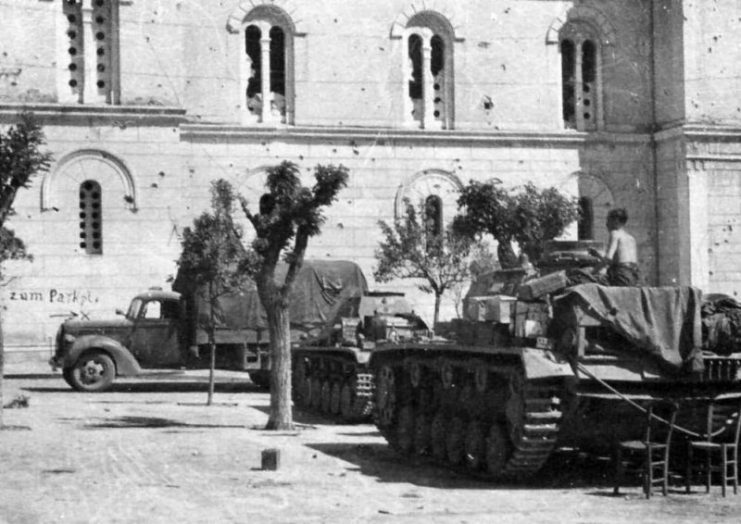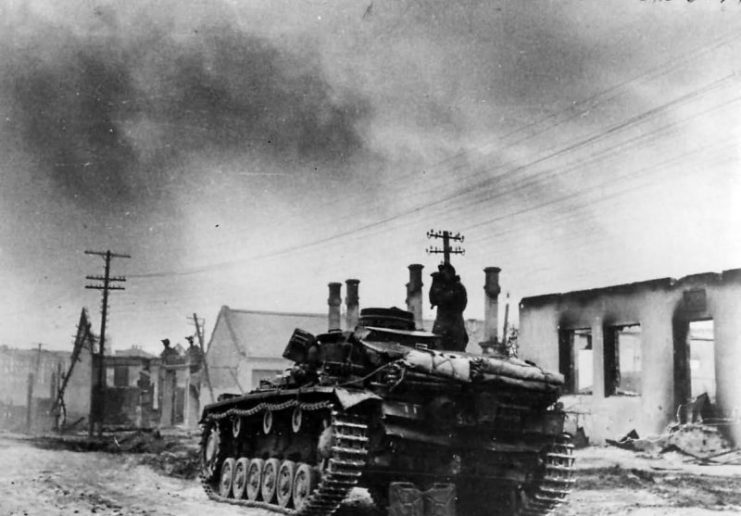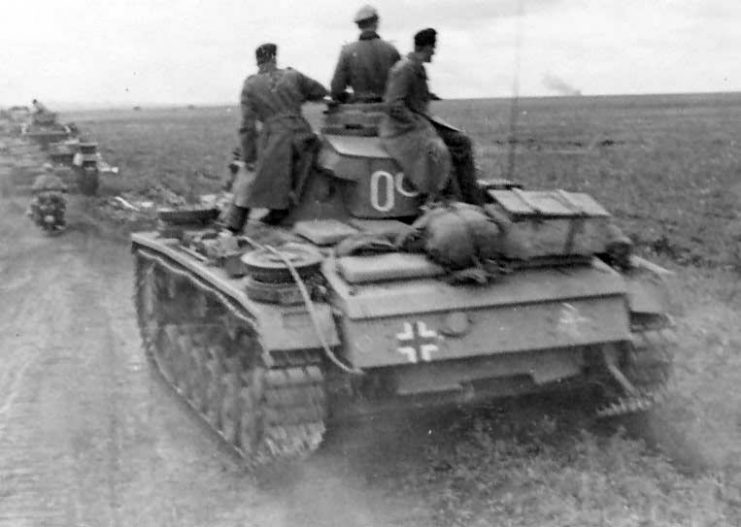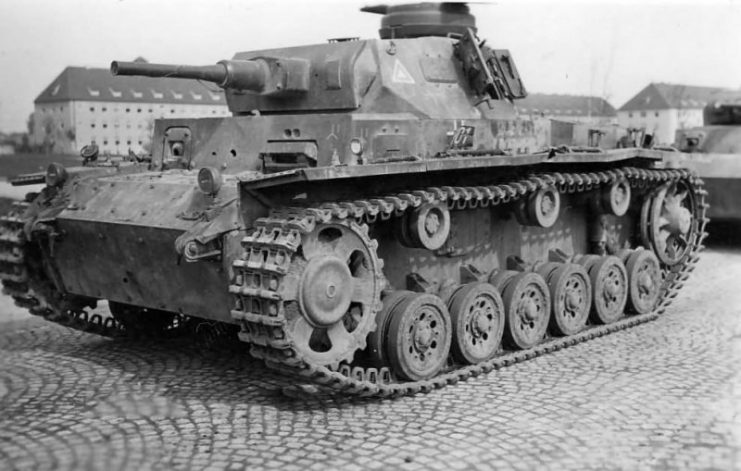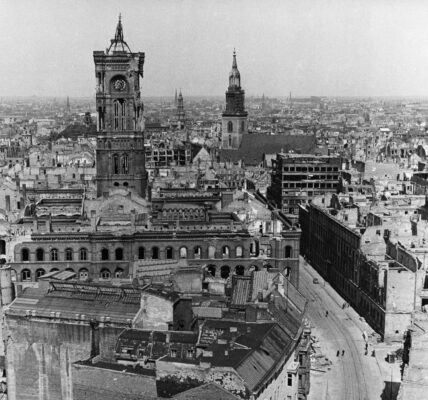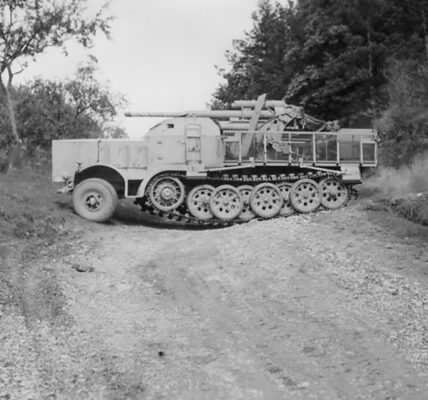

The Wehrmacht fielded the Panzerkampfwagen III (or Pz. III) from the very first day of World War II . It remained in service with Wehrmacht divisions until mid-1944, and individual tanks fought until Germany’s surrender. Despite its shortcomings, the Pz. III contributed significantly to the success of the German army.
In February 1934, the Ministry of Armaments organized a tender for the development of a new tank codenamed “Zugführerwagen” or “ZW.”
Four companies subsequently developed designs: MAN, Krupp, Daimler-Benz, and Rheinmetall. After completing the tests, the Daimler-Benz chassis was chosen in August 1935.

The various modifications of the Pz.III tank produced are as follows:
- А-Е – tanks with 37-mm cannons.
- FN – tanks with 50 mm cannons.
- MO – assault tank with a 75 mm howitzer.
- Self-propelled flamethrower.
- A commander’s armored car.
- Armored observation machine.

The AD modifications of the Pz.III were equipped with a Maybach HL 108TR engine with 250 hp, and the EN modifications had a Maybach HL 120TRM engine with 300 hp.
The first engine enabled a tank weighing 15.4 to 16 tons to reach speeds of up to 35 km/h on flat roads, while the second engine accelerated the somewhat heavier EN series to almost 40 km/h or more, depending on the modification. The power reserve remained unchanged, and the tanks’ range was approximately 154 to 164 km.
The main armament of the Pz.III in the AG variant was the 3.7 cm Rheinmetall-Borsig KwK L/45 cannon. The GJ variants were equipped with a 5 cm KwK 38 L/42 cannon, the JM variants with a 5 cm KwK 39 L/60 cannon, and the N variant with a 7.5 cm KwK 37 cannon. The AG variants were also equipped with three MG 29 machine guns, while the GM variants had only two MG 34 machine guns.
From 1940 to 1942, Pz.III tanks formed the backbone of German Panzer divisions. Due to their inferior armor and armament, they were used as special vehicles after 1943. A total of 5,691 Pz.III tanks of various modifications were produced during the production period from 1938 to 1943.
By the end of the summer of 1940, 168 tanks of the FH modification had been converted for underwater use. In addition, a self-propelled artillery unit for various purposes was developed based on the Pz.III.
The Pz. III participated in wartime hostilities against Poland, France, North Africa, the USSR, and other conflicts. Germany also supplied Pz. IIIs to other Axis armies, and the Red Army and the Allies used some captured Pz. IIIs.
